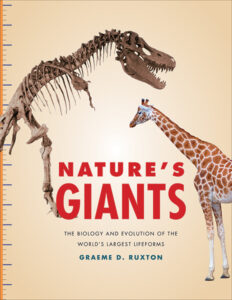 The Meganisoptera, the taxonomic order of remarkably large but now extinct odonates that thrived during the Carboniferous period, included species with wingspans measuring up to 75 cm. Arthropleura, a now extinct genus of Carboniferous period arthropods related to modern millipedes, included members that could reach two and a half meters in length. So why aren’t there any arthropods of such great sizes any longer?
The Meganisoptera, the taxonomic order of remarkably large but now extinct odonates that thrived during the Carboniferous period, included species with wingspans measuring up to 75 cm. Arthropleura, a now extinct genus of Carboniferous period arthropods related to modern millipedes, included members that could reach two and a half meters in length. So why aren’t there any arthropods of such great sizes any longer?
Why certain animals are the sizes they are – or aren’t – in different periods of the planet’s history is one of the many fascinating topics Graeme D. Ruxton addresses in his forthcoming book Nature’s Giants; The Biology and Evolution of the World’s Largest Lifeforms. “Through a diverse array of examples, from huge butterflies to giant squid, Ruxton explores the physics, biology, and evolutionary drivers behind organism size.”
If you enjoyed reading this, please consider signing up for The Well-read Naturalist's newsletter. You'll receive a helpful list of recently published reviews, short essays, and notes about books in your e-mail inbox once each fortnight.
